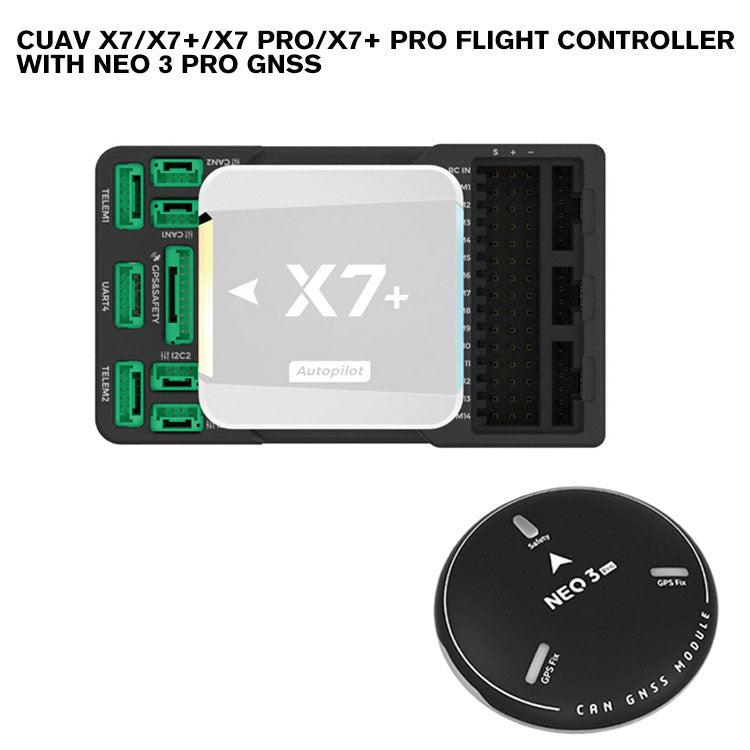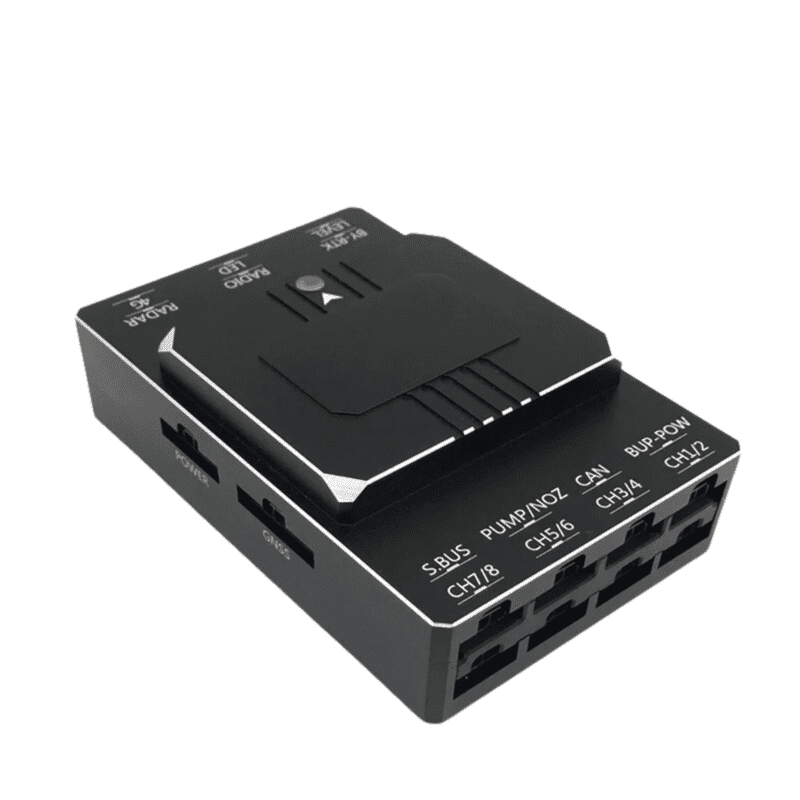Unrivaled Precision: SparkNavi Drone Flight Controller and GNSS/INS Made in Taiwan
Unrivaled Precision: SparkNavi Drone Flight Controller and GNSS/INS Made in Taiwan
Blog Article
Checking Out the Role of Drone Trip Controllers in Enhancing Trip Security and Navigation Efficiency
The advancement of drone technology has dramatically raised the relevance of flight controllers, which offer as the brain of these aerial cars. By incorporating real-time data from a variety of sensors, trip controllers boost trip security and navigation efficiency, guaranteeing that drones can run smoothly also in complex environments.

Comprehending Flight Controllers
Flight controllers are essential elements in the functioning of drones, working as the brains that handle and stabilize trip procedures. These innovative devices procedure information from different sensors, including accelerometers, gyroscopes, and GPS, to make sure that the drone keeps its intended flight course. The trip controller translates this information and implements commands based on pre-defined formulas, enabling the drone to react to environmental changes, such as wind or barriers.
The key function of a trip controller is to preserve stability throughout flight. It achieves this by making real-time adjustments to the drone's motors and control surfaces, making sure equilibrium and control. Furthermore, contemporary trip controllers include innovative functions such as waypoint navigation, allowing for automated trip paths and boosted operational effectiveness.
Comprehending the architecture of flight controllers is vital for both enthusiasts and professionals. As modern technology advances, flight controllers have actually ended up being extra capable and portable, integrating synthetic knowledge to adjust and enhance decision-making processes to complex trip situations.
Secret Parts of Flight Stability
Attaining ideal flight stability in drones depends on several essential components that work in concert to make certain controlled and smooth procedures. Central to this security is the flight controller itself, which processes information from various sensors to maintain the preferred flight mindset. This includes accelerometers and gyroscopes that gauge movement and alignment, allowing for real-time adjustments to the drone's position.
An additional critical element is the digital speed controllers (ESCs), which control the power supplied to the electric motors. By finely tuning electric motor rates in reaction to flight controller commands, ESCs help keep balance and counteract disruptions brought on by wind or sudden motions.
Additionally, the design of the drone's frame plays a pivotal role in flight security. A well-structured frame decreases resonances and boosts the overall wind resistant profile, contributing to smoother trip qualities. Ultimately, the assimilation of advanced algorithms within the trip controller aids in predictive adjustments, ensuring a versatile and responsive flight experience.
Together, these components develop a natural system that enhances a drone's stability, permitting for accurate handling and boosted performance in numerous flight conditions.
Navigating Effectiveness Techniques
Efficiency in navigation is essential for optimizing drone procedures, particularly in complicated settings. Efficient navigating techniques enhance the capability of drones to go across challenging surfaces and stay clear of challenges, consequently boosting operational effectiveness and security.
One popular technique is the application of innovative general practitioners and inertial dimension units (IMUs) that supply precise area monitoring and positioning information. These innovations enable drones to calculate optimal trip paths in real-time, taking into account numerous variables such as wind problems and potential barriers.
An additional method involves using formulas for course planning and optimization. Algorithms such as A * and Dijkstra's algorithm can be deployed to determine the most effective course while minimizing power intake and flight time. Moreover, incorporating machine learning designs can allow drones to adaptively gain from their settings, boosting navigating capabilities with experience.

Impact on Autonomous Drones
The combination of innovative navigating techniques has actually exceptionally changed the capacities of autonomous drones, enabling them to operate with higher freedom and precision. SparkNavi drone flight controller and GNSS/INS made in taiwan. These improvements are mostly credited to advanced flight controllers that utilize real-time information handling and sensor blend, enabling drones to browse complex atmospheres effortlessly
The influence on self-governing drones prolongs past plain navigating; it incorporates boosted barrier evasion, improved stability throughout dynamic problems, and boosted goal dependability. By leveraging algorithms that include machine learning and man-made intelligence, drones can adjust to altering situations, making notified choices that optimize their flight paths while decreasing dangers.
Additionally, the application of robust trip controllers has assisted in the implementation of complicated tasks, such as aerial inspections, delivery services, and agricultural monitoring, with marginal human treatment. This ability not just enhances operations but likewise reduces human error, thus boosting general security.
Because of this, the functional range of self-governing drones has actually expanded significantly, making them essential tools in different markets. Their ability to execute successfully in diverse circumstances underscores the essential role that progressed flight controllers play fit the future of unmanned aerial systems.
Future Fads in Flight Control
Regularly, innovations in flight control innovation are positioned to redefine the landscape of drone operations in the coming years. Emerging trends show a significant change towards boosted expert Continue system (AI) integration, allowing trip controllers to process real-time information more successfully. This advancement will certainly facilitate better decision-making capabilities, allowing drones to adjust to dynamic ecological problems autonomously.
Additionally, the execution of artificial intelligence algorithms is anticipated to boost predictive upkeep, consequently minimizing downtime and prolonging the lifecycle of drone components. This positive approach to maintenance will be vital as drone applications broaden across various markets, from farming to logistics.

.png)
Last but not least, developments in secure interaction methods will certainly attend to security and governing problems, making sure that drones can operate seamlessly in stuffed airspaces (SparkNavi drone flight controller and GNSS/INS made in taiwan). Jointly, these patterns direct in the direction of a future where trip control systems are not only smarter and extra efficient but likewise capable of running safely in an increasingly integrated airspace
Verdict
In verdict, drone trip controllers are important to improving flight stability and navigating effectiveness with the innovative handling of sensor data. By preserving optimal flight attitudes and employing sophisticated formulas for course optimization and challenge evasion, these controllers substantially add to the freedom and operational security of drones. As technology remains to evolve, additionally improvements in flight control systems are expected, assuring improved performance and broadened abilities in the world of unmanned airborne automobiles.
By incorporating real-time data from a selection of sensors, flight controllers enhance trip stability and navigating effectiveness, making sure that drones can run efficiently also in complex settings.Flight controllers are essential elements in the performance of drones, serving as the brains that maintain and manage flight procedures. Furthermore, modern flight controllers incorporate sophisticated features such as waypoint navigation, allowing for automated trip courses and enhanced operational efficiency.
Central to this security is the flight controller itself, which refines information from different sensors to keep the desired trip mindset.In final thought, drone flight her explanation controllers are important to boosting trip stability and navigating effectiveness through the advanced handling of sensor data.
Report this page